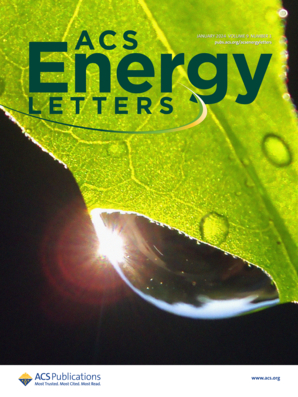三电 "静电镊子",用于操纵飞秒激光加工制备的润滑易滑表面上的液滴
IF 19.3
1区 材料科学
Q1 CHEMISTRY, PHYSICAL
引用次数: 0
摘要
"静电镊子 "是一种很有前途的液滴操纵工具,但它在超疏水表面上操纵液滴时面临许多限制。在这里,我们基于三电静电镊子(TETs),实现了在受尼芬特斯启发的润滑湿滑表面上对液滴的非接触式多功能操控。与超疏水表面上的静电液滴操纵相比,TET 在光滑表面上操纵液滴具有很多优势。静电场促使中性液滴内部的电荷重新分布,从而使三电荷棒在静电力的作用下驱动液滴向前移动。带正电或负电的液滴也可以通过 TET 在静电吸引和排斥的基础上移动。TET 可以在不同条件下操纵液滴,例如反重力爬升、悬浮液滴运动、腐蚀性液体、低表面张力液体(例如表面张力为 22.3 mN/m 的乙醇)、不同液滴体积(从 100 nL 到 0.5 mL)、通过狭窄缝隙、在受损区域滑动、在各种固体基底上,甚至在封闭系统中的液滴。使用 TET 可以轻松实现各种与液滴相关的应用,如运动引导、运动切换、基于液滴的微反应、表面清洁、表面除雾、液体分拣和细胞标记。本文章由计算机程序翻译,如有差异,请以英文原文为准。
Triboelectric “Electrostatic Tweezers” for Manipulating Droplets on Lubricated Slippery Surfaces Prepared by Femtosecond Laser Processing
“Electrostatic tweezer” is a promising tool for droplet manipulation, but it faces many limitations in manipulating droplet on superhydrophobic surfaces. Here, we achieve noncontact and multifunctional droplet manipulation on Nepenthes-inspired lubricated slippery surfaces based on triboelectric electrostatic tweezers (TETs). The TET manipulation of droplets on a slippery surface shows many advantages over the electrostatic droplet manipulation on a superhydrophobic surface. The electrostatic field induces the redistribution of the charges inside the neutral droplet, which makes the triboelectric charged rod drive the droplet to move forward under the electrostatic force. Positively or negatively charged droplets can also be moved by TET based on electrostatic attraction and repulsion. TET enables manipulate droplets under diverse conditions, such as anti-gravity climb, the motion of suspended droplets, corrosive liquids, low-surface-tension liquids (e.g., ethanol with a surface tension of 22.3 mN/m), different droplet volumes (from 100 nL to 0.5 mL), passing through narrow slits, sliding over damaged areas, on various solid substrates, and even droplets in an enclosed system. Various droplet-related applications, such as motion guidance, motion switching, droplet-based microreactions, surface cleaning, surface defogging, liquid sorting, and cell labeling can be easily achieved with TET.
求助全文
通过发布文献求助,成功后即可免费获取论文全文。
去求助
来源期刊

ACS Energy Letters
Energy-Renewable Energy, Sustainability and the Environment
CiteScore
31.20
自引率
5.00%
发文量
469
审稿时长
1 months
期刊介绍:
ACS Energy Letters is a monthly journal that publishes papers reporting new scientific advances in energy research. The journal focuses on topics that are of interest to scientists working in the fundamental and applied sciences. Rapid publication is a central criterion for acceptance, and the journal is known for its quick publication times, with an average of 4-6 weeks from submission to web publication in As Soon As Publishable format.
ACS Energy Letters is ranked as the number one journal in the Web of Science Electrochemistry category. It also ranks within the top 10 journals for Physical Chemistry, Energy & Fuels, and Nanoscience & Nanotechnology.
The journal offers several types of articles, including Letters, Energy Express, Perspectives, Reviews, Editorials, Viewpoints and Energy Focus. Additionally, authors have the option to submit videos that summarize or support the information presented in a Perspective or Review article, which can be highlighted on the journal's website. ACS Energy Letters is abstracted and indexed in Chemical Abstracts Service/SciFinder, EBSCO-summon, PubMed, Web of Science, Scopus and Portico.
 求助内容:
求助内容: 应助结果提醒方式:
应助结果提醒方式:


